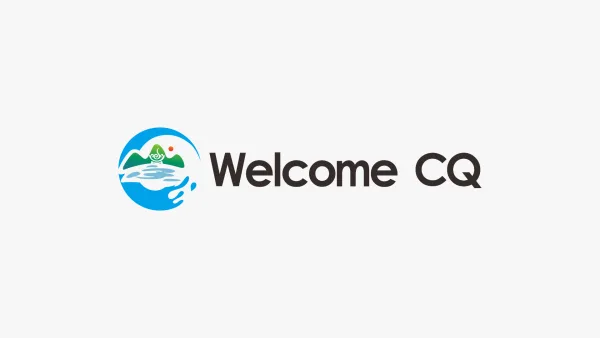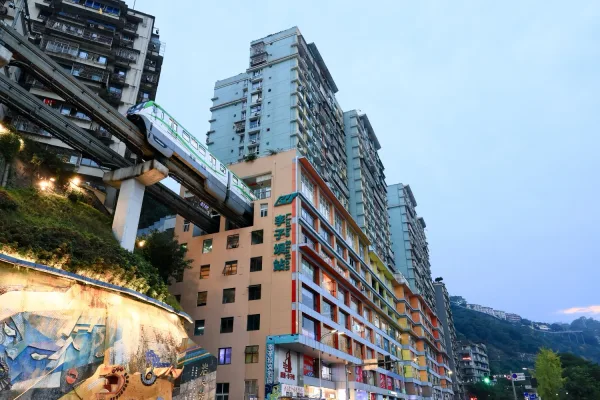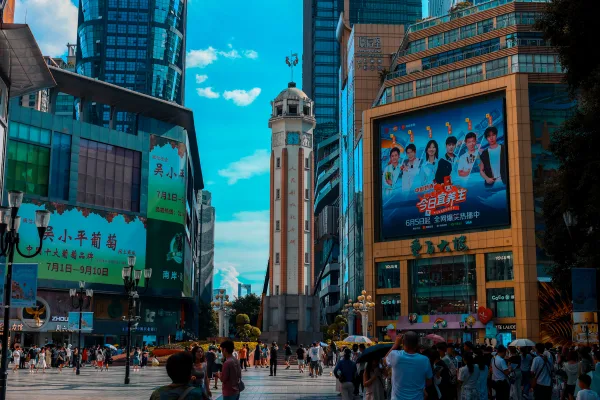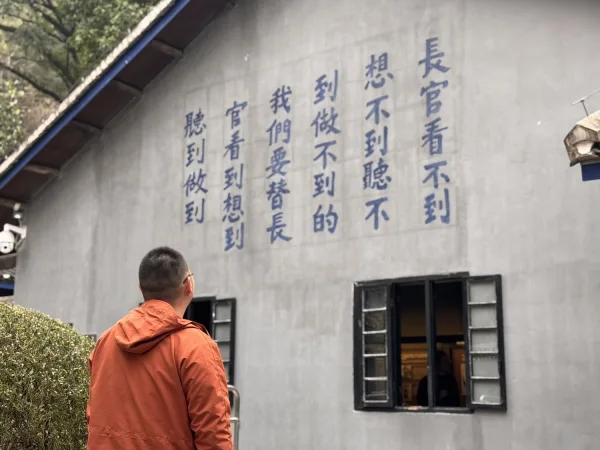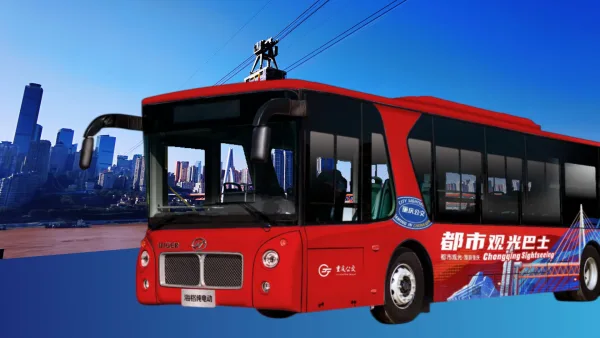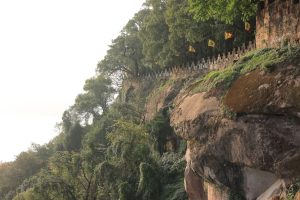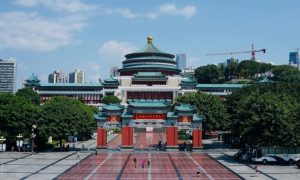Chongqing Metro Transit System Complete Visitor Guide
About Chongqing’s Metro System
Chongqing’s metro system (Chongqing subway system) is a marvel of modern engineering, stretching over 561 kilometres and serving as the backbone of this vibrant, mountainous megacity.
Launched in 2005 with the opening of Line 2, a pioneering monorail, the system has rapidly expanded to 11 lines by 2023 and is projected to grow to 18 lines by 2050, reflecting Chongqing’s ambitious urban vision.
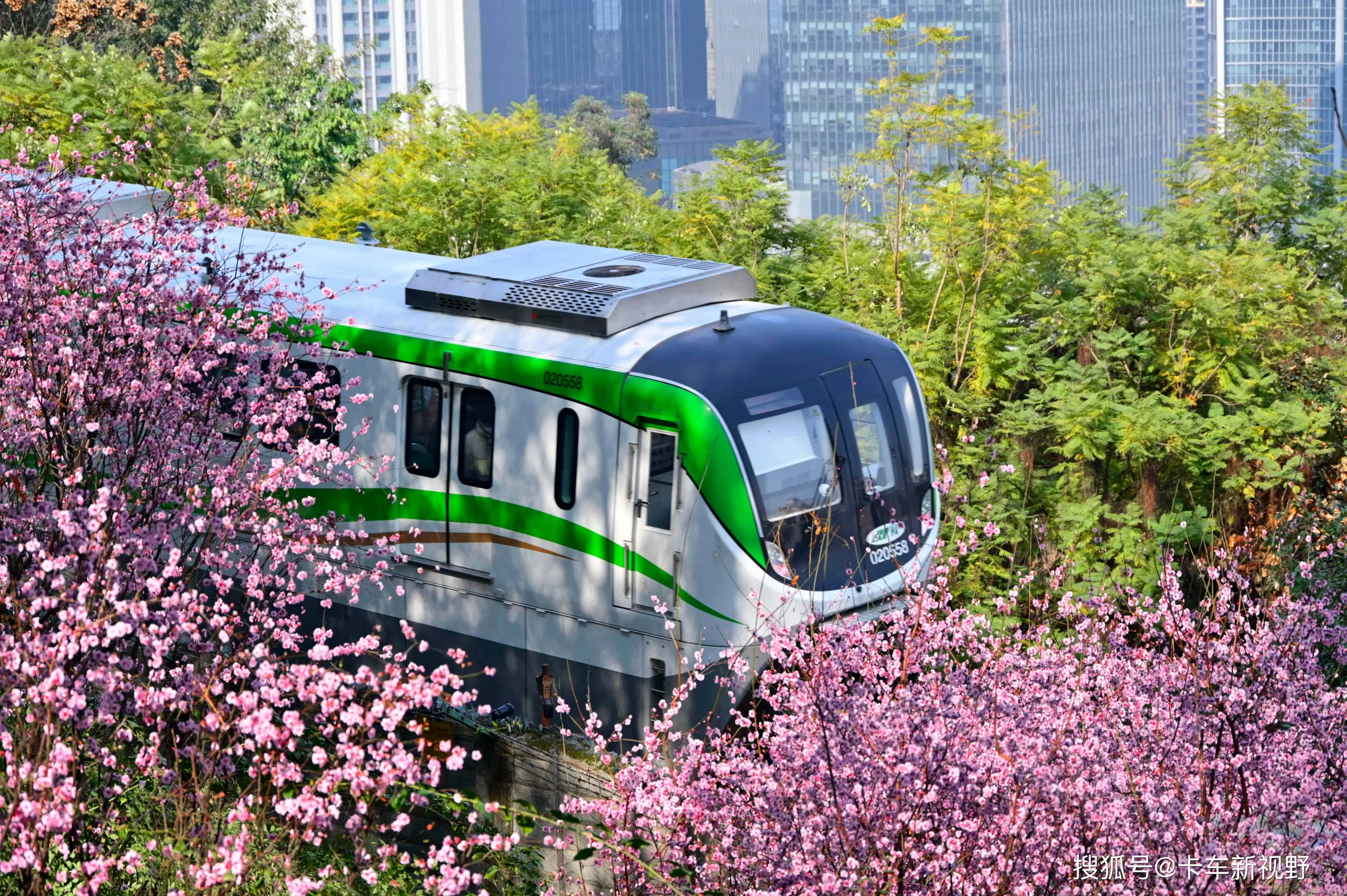
Unlike many metro systems worldwide, Chongqing Metro’s network masterfully combines monorail trains (Lines 2 and 3) with conventional heavy-rail metro lines, ingeniously designed to conquer the city’s rugged hills and winding river valleys.
The monorails, gliding through urban landscapes and even a residential building at Liziba Station, offer a futuristic ride tailored to Chongqing’s steep terrain.
Complementing this, the heavy-rail lines provide high-capacity connectivity across the sprawling metropolis.
For an even more distinctive experience, the SkyShuttle — a driverless, elevated light rail in Bishan District — delivers breathtaking panoramic views of the outskirts, blending cutting-edge technology with scenic charm.
Latest Chongqing Metro Network Map 2025
See the latest Chongqing metro network map, updated August of 2025.
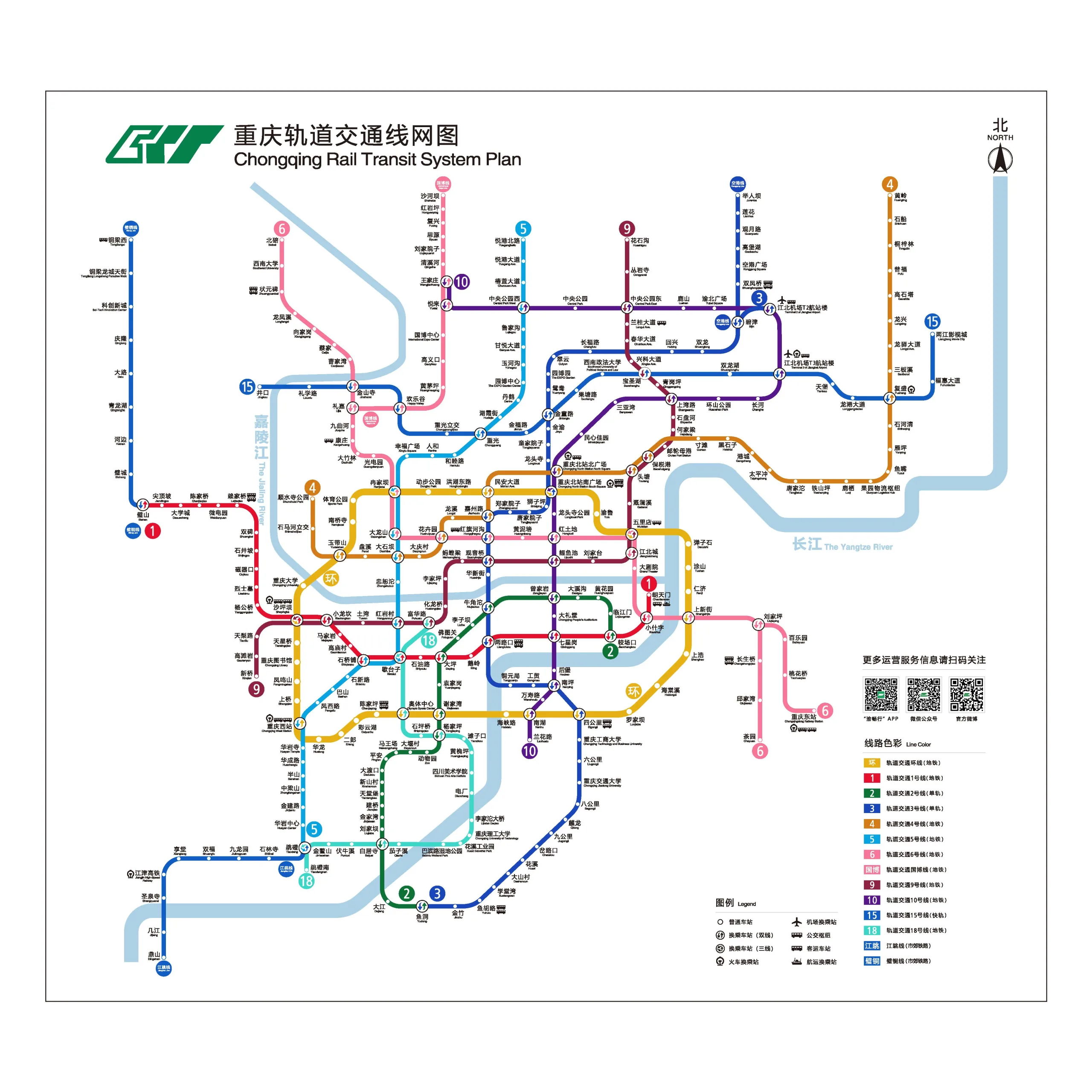
Chongqing Metro Routes

This extensive network connects key urban districts, from the bustling Jiefangbei CBD to the historic Ciqikou Ancient Town, and provides seamless access to Chongqing Jiangbei International Airport’s Terminals 2 and 3 via Line 3 and Line 10.
For visitors, the metro is a convenient and affordable gateway to Chongqing’s top attractions, with English signage, bilingual announcements, and fares ranging from ¥2 to ¥10 (roughly $0.30–$1.50 USD).
Loop Line
The Loop Line, a 50.88 km circular metro route, is a vital artery connecting the city’s urban core and suburban districts.
Starting and ending at Chongqing West Railway Station (Chongqingxi, 重庆西), it spans Shapingba, Jiangbei, Yubei, Nan’an, and Jiulongpo districts, linking key hubs and attractions.
Notable stops include Shapingba Station for the vibrant Shapingba shopping center and Chongqing University, Chongqing Library Station for cultural exploration, Chongqing North Railway Station South Square (note: high-speed trains depart from the North Square, not the South Square), Danzishi Station for scenic Yangtze River views, and Erlang Station for modern shopping complexes.
As a bi-directional loop, the line runs clockwise and counterclockwise, allowing passengers to choose the direction with fewer stops for a quicker journey.
Line 1
Chongqing’s Metro Line 1, the city’s first metro line, stretches 45.34 km from east to west, connecting the vibrant heart to its western suburbs.
Running from Chaotianmen Station in Yuzhong District to Bishan Station in Bishan District, it passes through Yuzhong, Jiulongpo, and Shapingba districts, serving 25 stations—16 underground and 9 elevated.
Opened in 2011, this vital route uses 6-car B-type metro trains with a top speed of 100 km/h, ensuring fast and reliable travel. Key stops include Chaotianmen for scenic Yangtze River views, Xiaoshizi for Hongya Cave’s iconic stilted architecture, Arhat Temple for a view of modern and historical, and Ciqikou for the historic Ciqikou Ancient Town, 1949 Stage Show, Baigongguan White Residence, and Zhazidong Prison Historical Site.
Line 2
Chongqing’s Metro Line 2, a 31.36 km cross-seat monorail, holds the distinction of being China’s first operational monorail line, offering a unique and scenic ride through the “8D Magic City.”
Stretching from Jiaochangkou Station in Yuzhong District to Yudong Station in Banan District, it crosses Jiulongpo and Dadukou districts, serving 25 stations—3 underground and 22 elevated. Opened in 2005, Line 2 connects bustling urban hubs and serene green spaces, using 6- or 8-car monorail trains with a top speed of 80 km/h.
Iconic stops include Xiejiawan station for shopping and Minzhu village, Fotuguan station for the Mid-mountain Cliff trail, Liziba station for its world-famous monorail passing through a residential building, Niujiaotuo for transfers to Line 3, Zengjiayan station for Chongqing People’s Auditorium and The Three Gorgeous Museum, Linjiangmen for Kuixinglou, and Jiaochangkou for the vibrant Jiefangbei CBD and People’s Liberation Monument.
Line 3
Chongqing’s Metro Line 3, spanning 67.09 km, holds the title of the world’s longest cross-seat monorail, weaving a vital north-south corridor.
Stretching from Jiangbei Airport T2 and Jurendaba in Yubei District to Yudong in Banan District, it connects Banan, Nan’an, Yuzhong, Jiangbei, and Yubei districts, serving as the backbone of Chongqing’s urban transit network.
With 45 stations—34 elevated and 11 underground—this line, opened in 2011, uses 6- or 8-car monorail trains with a top speed of 80 km/h, offering a smooth and scenic ride.
Key stops include Jiangbei Airport for seamless travel connections, Niujiaotuo for Fotuguan Park and Line 2 transfers, Guanyinqiao for vibrant shopping, and Hongqihegou for access to Jiefangbei CBD via Line 6. It also connects Chongqingbei Railway Station North Square to the high-speed rail that can take you to other sub-districts of Chongqing, such as Fuling, for attractions like Project 816, the Great Rift Valley and Wujiang River; Changshou for Longevity Lake; Rongchang for Chinese pottery history and Hubei-Guangdong migration.
Line 4
Chongqing’s Metro Line 4 spans two phases, connecting the city’s northern districts with its central and industrial zones.
Phase 1, opened in 2018, stretches 15.64 km from Min’an Avenue in Yubei District to Tangjiatuo in Jiangbei District, covering 9 stations across Yubei and Jiangbei. It serves key hubs like the Chongqing North Railway Station and the Lianglu-Cuntan Free Trade Port, fostering connectivity between urban centers.
Phase 2, operational since 2022, extends 32.8 km with 15 stations (5 elevated, 10 underground), linking Yufu and Longxing industrial parks in Liangjiang New Area to Tangjiatuo, with an average station spacing of 2.2 km.
Using 6-car As-type metro trains with a top speed of 100 km/h, Line 4 ensures efficient travel. While primarily serving industrial and suburban areas, it offers tourist access via key stops like Min’an Avenue (near Guanyinqiao’s shopping district) and Chongqing North Station North Square (for intercity rail and transfers to Line 3’s urban attractions).
Line 5
Chongqing’s Metro Line 5, a 48.36 km north-south lifeline connecting bustling urban districts with scenic and suburban areas.
Phase 1 North Section, opened in 2017, runs from Yuanbo Center in Yubei District to Dashi Dam in Jiangbei District, while the South Section extends from Shiqiaopu in Jiulongpo District to Tiaodeng in Dadukou District, passing through Sandingba.
The North Extension, operational since 2021, stretches from Yuanbo Center to Yuegang North Road.
Together, these segments serve 22 stations—18 underground and 4 elevated—across Yubei, Jiangbei, Jiulongpo, Sandingba, and Dadukou districts.
Using 6-car As-type metro trains with a top speed of 100 km/h, Line 5 ensures swift and comfortable travel.
Key tourist stops include Yuanbo Center for Garden Expo Park, Dashi Dam for proximity to Jiefangbei (via Line 1 transfer), and Shiqiaopu for local markets and dining.
Line 6
Chongqing’s Metro Line 6, a vital 85.6 km southeast-to-northwest artery, links vibrant urban hubs with scenic suburban landscapes.
Running from Chayuan in Nan’an District to Beibei in Beibei District, it spans Nan’an, Yuzhong, Jiangbei, Yubei, and Beibei districts, serving 28 stations—22 underground and 6 elevated—along its main line.
With the recent eastern extension of 6.79 km from Liujiaping to Chongqingdong Railway Station, opened on June 27, 2025, the line now includes two additional stations, enhancing connectivity to key transportation hubs.
Opened initially in 2012, this line uses 6-car B-type metro trains with a top speed of 100 km/h, ensuring a swift and comfortable ride.
Key tourist stops include Mid-mountain Cliff Trail for an amazing city walk with great views, Xiaoshizi for Hongya Cave’s iconic stilted architecture, Jiangbeicheng for skyline views, Red Flag River Valley for Jiefangbei access, and Beibei for cultural sites like Jinyun Mountain, with the new extension offering easier access to Chongqingdong Railway Station.
Line 9
Chongqing’s Metro Line 9, a 47.62 km southwest-to-northeast corridor linking suburban districts with urban and industrial hubs.
Phase 1, opened in 2022, spans 39.81 km from Xinqiao Station in Shapingba District to Xingke Avenue Station in Yubei District, serving 26 stations—24 underground and 2 elevated—across Shapingba, Jiulongpo, and Yubei districts.
Phase 2, operational since 2023, extends 7.81 km from Chunhua Avenue to Huashigou in Yubei District, adding 5 stations (3 underground, 2 elevated).
Using 6-car As-type metro trains with a top speed of 100 km/h, Line 9 ensures swift and modern travel.
Key tourist stops include Gaotankou for proximity to Ciqikou Ancient Town, and Guanyinqiao for its vibrant pedestrian street.
While Line 9 primarily serves suburban and industrial zones, its connectivity to central attractions via transfers (e.g., to Hongya Cave or Jiefangbei) makes it valuable for foreign visitors.
Line 10
Line 10, a 44.14 km north-south metro line, links Chongqing’s core with its airport and northern suburbs.
Key tourist stops include Jiangbei Airport for seamless arrivals, Guanyinqiao for shopping, and Yuelai for the International Expo Center.
Line 18
Line 18, a 28.96 km north-south metro line with a “pine green” (Pantone PT3255C) identifier, connects central Chongqing to its southern districts. Running from Fuhua Road in Yuzhong District to Tiaodeng South in Dadukou District, it serves 19 stations (12 underground, 7 elevated) across Yuzhong, Jiulongpo, Banan, and Dadukou, with 9 transfer stations.
Key tourist stops include Xiaoshizi for Hongya Cave and Tiaodeng South for proximity to Dadukou Park.
Guobo Line
Chongqing’s Guobo Line, also known as the International Expo Line, is a 26.58 km metro route that weaves through the city, linking suburban districts with key cultural and commercial hubs.
Running from Lijia Station in Yubei District to Shaheba Station in Yubei District, it serves 12 stations—10 underground and 2 elevated—primarily in the Liangjiang New Area.
Opened in 2013, this line uses 6-car B-type metro trains with a top speed of 100 km/h, offering a smooth and efficient ride. Designed to support the Chongqing International Expo Center, the Guobo Line connects visitors to modern landmarks and green spaces, with key stops like Yuelai for the Expo Center and its adjacent Yue Lai Eco-Museum, and Lijia for transfers to Line 6’s Lijia Wetland Park. While the line primarily serves suburban and expo-related areas, its connectivity to central attractions via transfers makes it valuable for tourists.
Jiangtiao Line
The Jiangtiao Line, a 28.22 km suburban railway, is Chongqing’s first operational city-suburban rail, connecting urban Chongqing to Jiangjin District. Running from Tiaodeng Station (Line 5) in Dadukou District to Shengquansi Station in Jiangjin District, it serves 6 stations across Jiangjin, Jiulongpo, Dadukou, and the High-Tech Zone.
Key tourist stops include Tiaodeng for urban access and Shengquansi for Jiangjin’s cultural sites.
Bitong Line
Chongqing’s Bitong Line, a 37.5 km suburban rapid transit line, extends the metro network into the scenic Tongliang District, offering a gateway to the region’s cultural and natural treasures. Part of the Chongqing Suburban Railway, it stretches from Bishan Station in Bishan District to Tongliangxi Station in Tongliang District, serving 9 stations.
Whether you’re marvelling at the monorail gliding through a residential building at Liziba Station or exploring the illuminated stilted architecture of Hongya Cave, Chongqing’s metro makes the “8D Magic City” accessible and unforgettable.
Prepare For Your Chongqing Metro Trip
Plan Your Trip
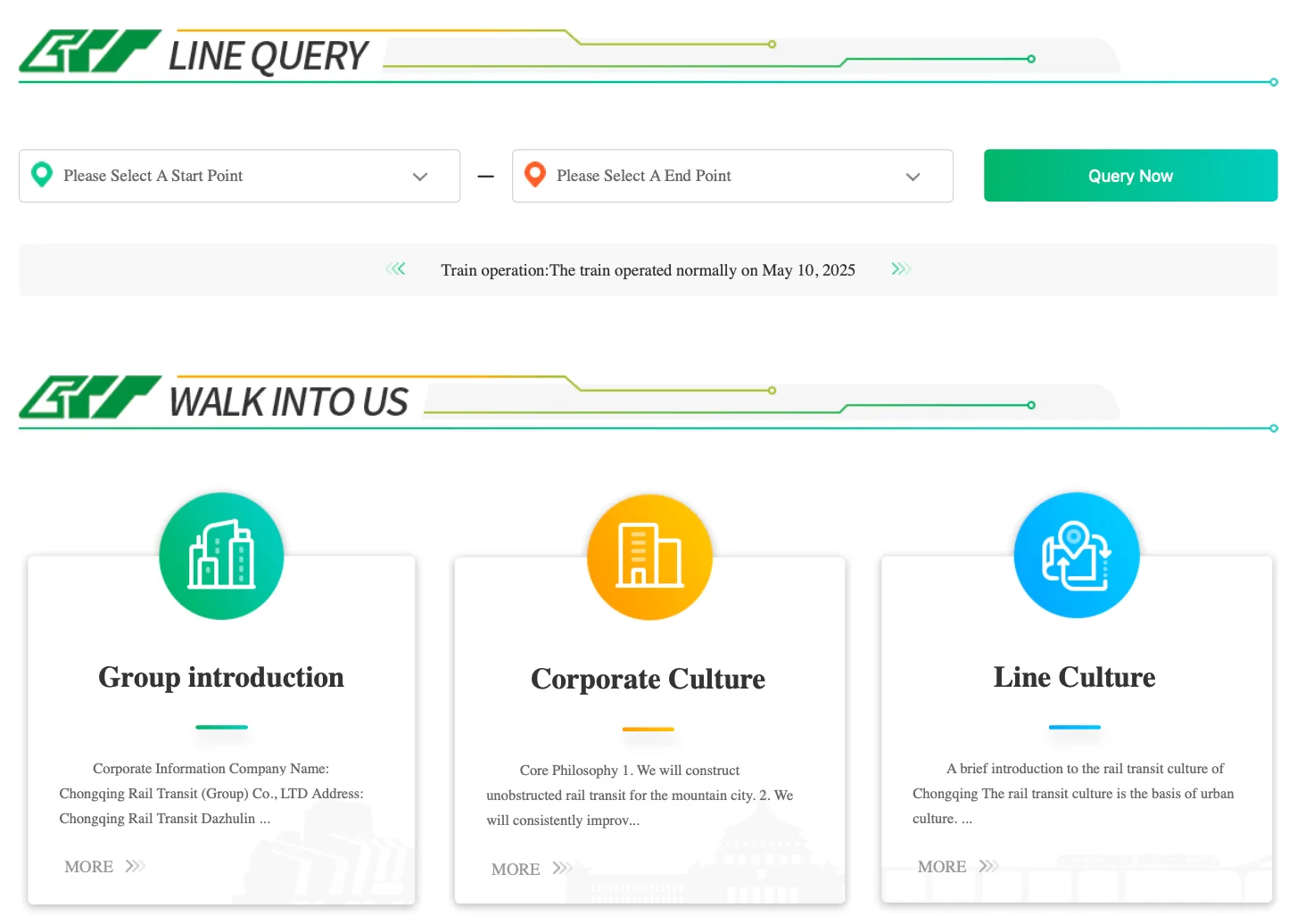
Use Chongqing Metro trip planning tools such as CRT Transit Planner, Apple Maps or AMap to map out your routes. Consider travel time, walking distances, transfer points and other modes.
Chongqing Metro Operating Hours
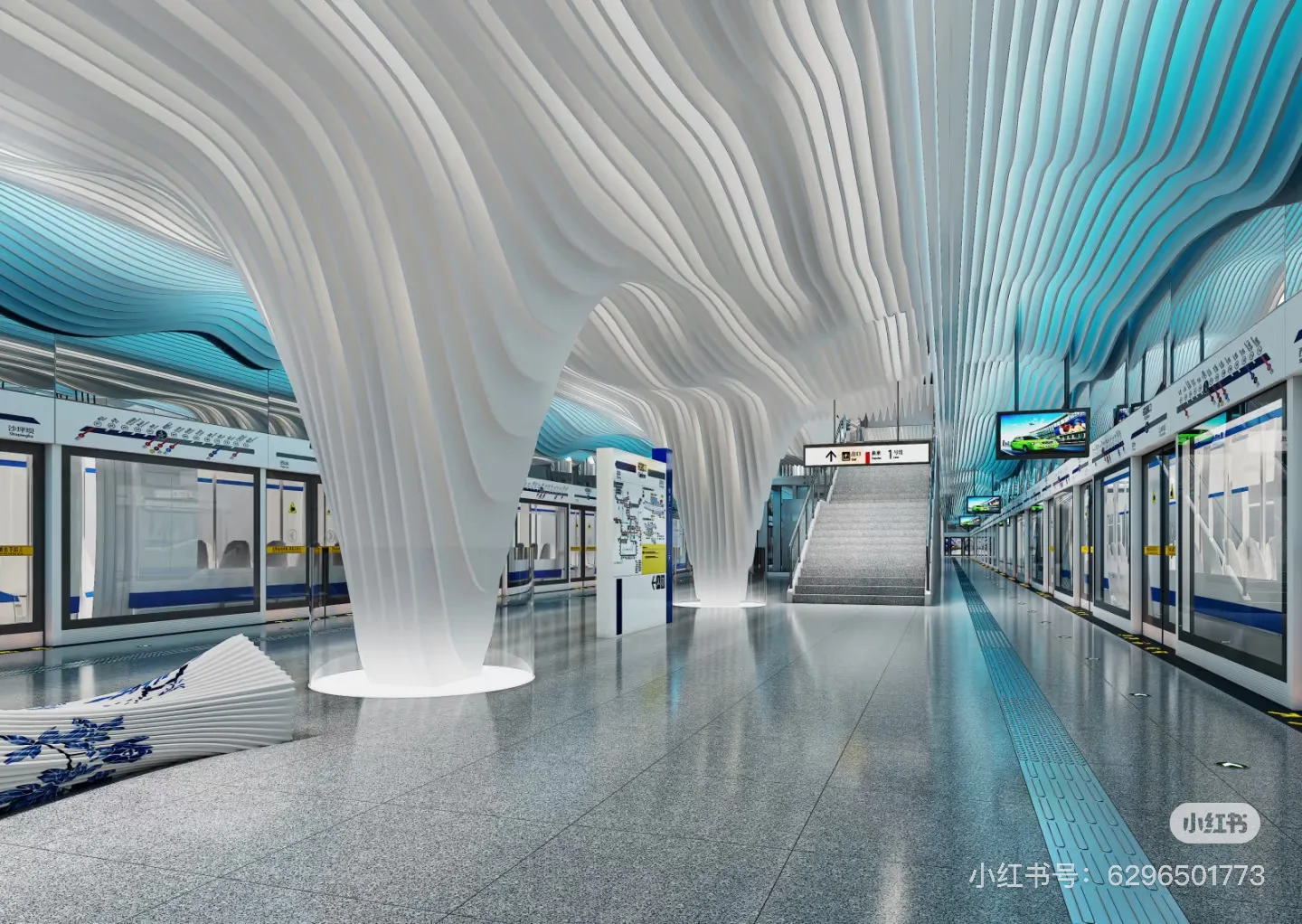
First train: around 6:30 am
Last train: around 11:30 pm
Chongqing Metro Cards and Fares
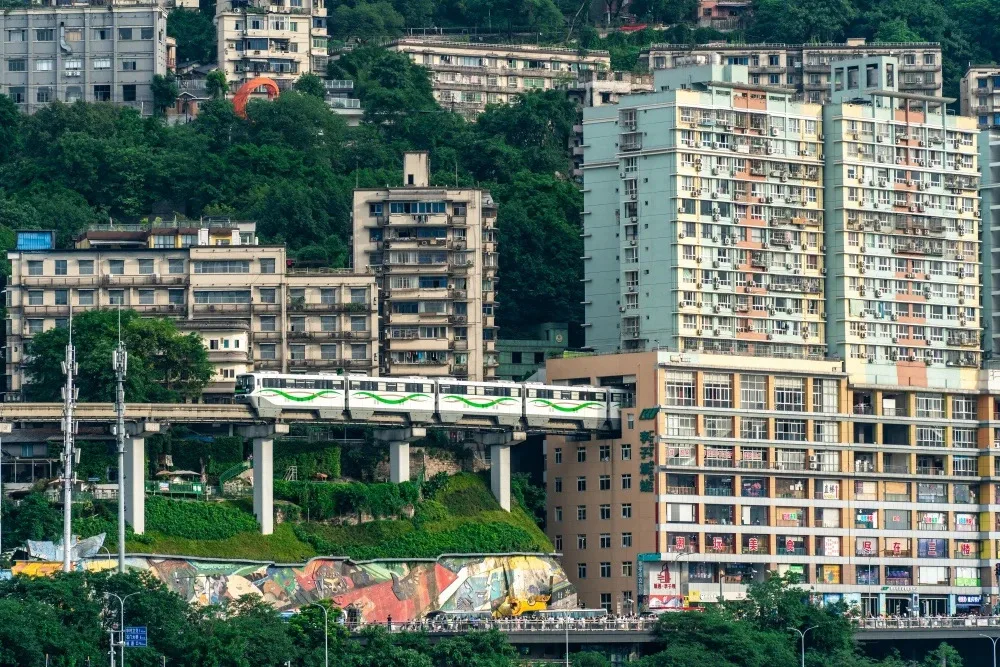
Chongqing Metro has implemented a new fare model effective July 30, 2025.
The fares start at ¥2 ($0.30 USD) and increase by ¥1 for every 5–7 km, up to a maximum of ¥11 ($1.50 USD).
The 1 hour free transit exchange from metro to bus or from bus to bus remains the same.
The additional cost-savings added to the transit card include:
- 70% discount on accumulated monthly transit expenditure exceeding ¥100 and 50% discount on accumulated monthly transit expenditure exceeding ¥200.
- ¥18 for a 24-hour daypass; ¥45 for a 3 day pass and ¥70 for a 5 day pass.
Fares are automatically calculated when purchasing tickets or scanning at gates.
Chongqing Metro Safety Screening
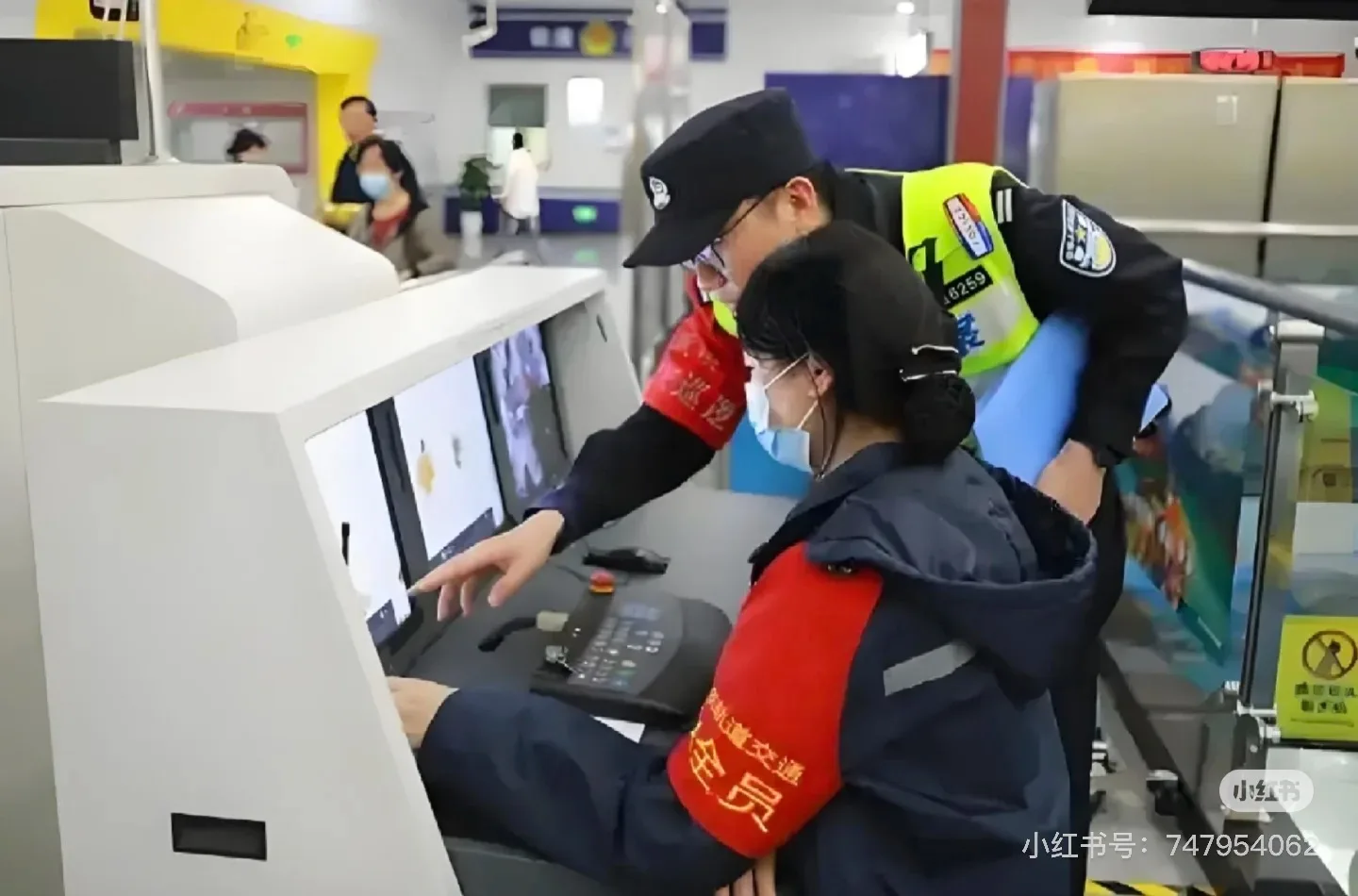
All passengers must undergo security screening at metro stations. Cooperate with security officers to ensure a smooth process.
- Baggage: Place bags, suitcases, or containers in X-ray machines for inspection.
- Liquids: Prove water is safe by taking a sip in front of officers or allowing a security check.
- Power Banks: Remove power banks (up to 100Wh, max 5) from bags for separate screening.
- Prohibited Items: Firearms, explosives (e.g., fireworks, ammunition), controlled knives (e.g., daggers, blades >15 cm), flammable/toxic substances (e.g., gasoline, pesticides), radioactive materials, and strong-smelling or panic-inducing items are strictly banned.
- Restricted Items: Small knives (blade <20 cm), hammers, or alcohol (24–70% ABV, up to 3L) are allowed in limited quantities if properly packaged.
Use a translation app if clarification is needed during screening.
Avoid carrying restricted items to speed up checks.
Chongqing Metro Ticket Checking
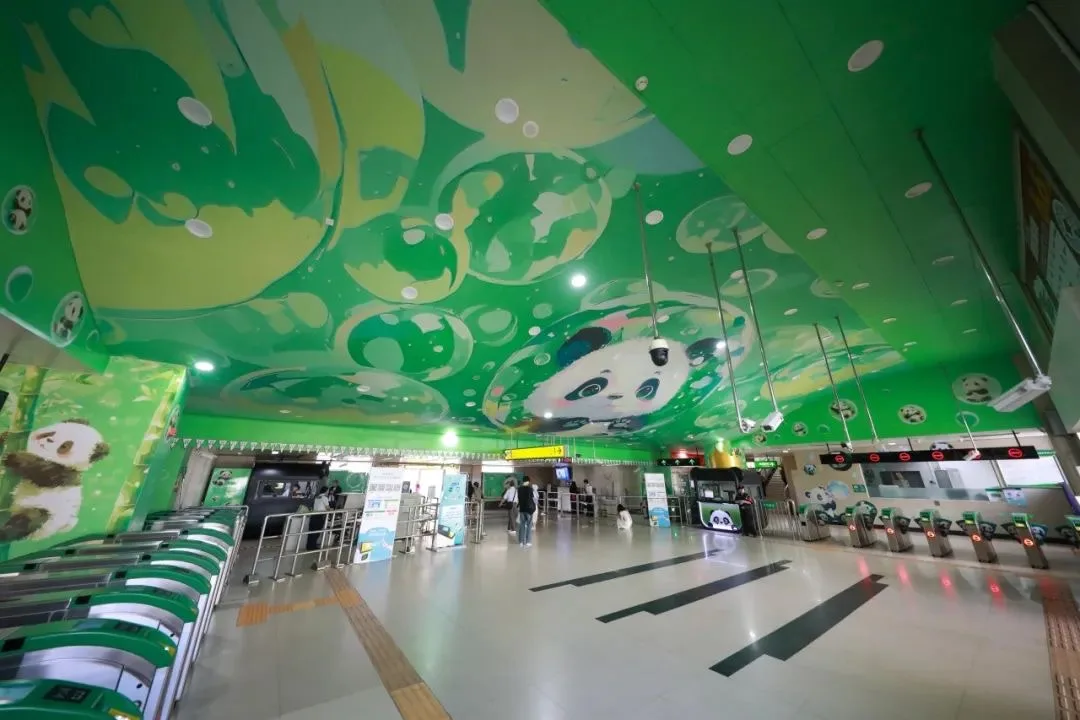
Entry Process:
- Physical Ticket: Tap on the gate’s card reader to open.
- Transit Card/Apple Wallet: Tap the card or iPhone on the reader for instant access.
- Mobile Apps: Open WeChat or Alipay’s transit mini-app, display the QR code, and scan at the gate’s QR reader.
Exit Process:
Repeat the same process to exit. Keep tickets or cards handy, as random checks may occur.
Boarding and Riding on Chongqing Metro
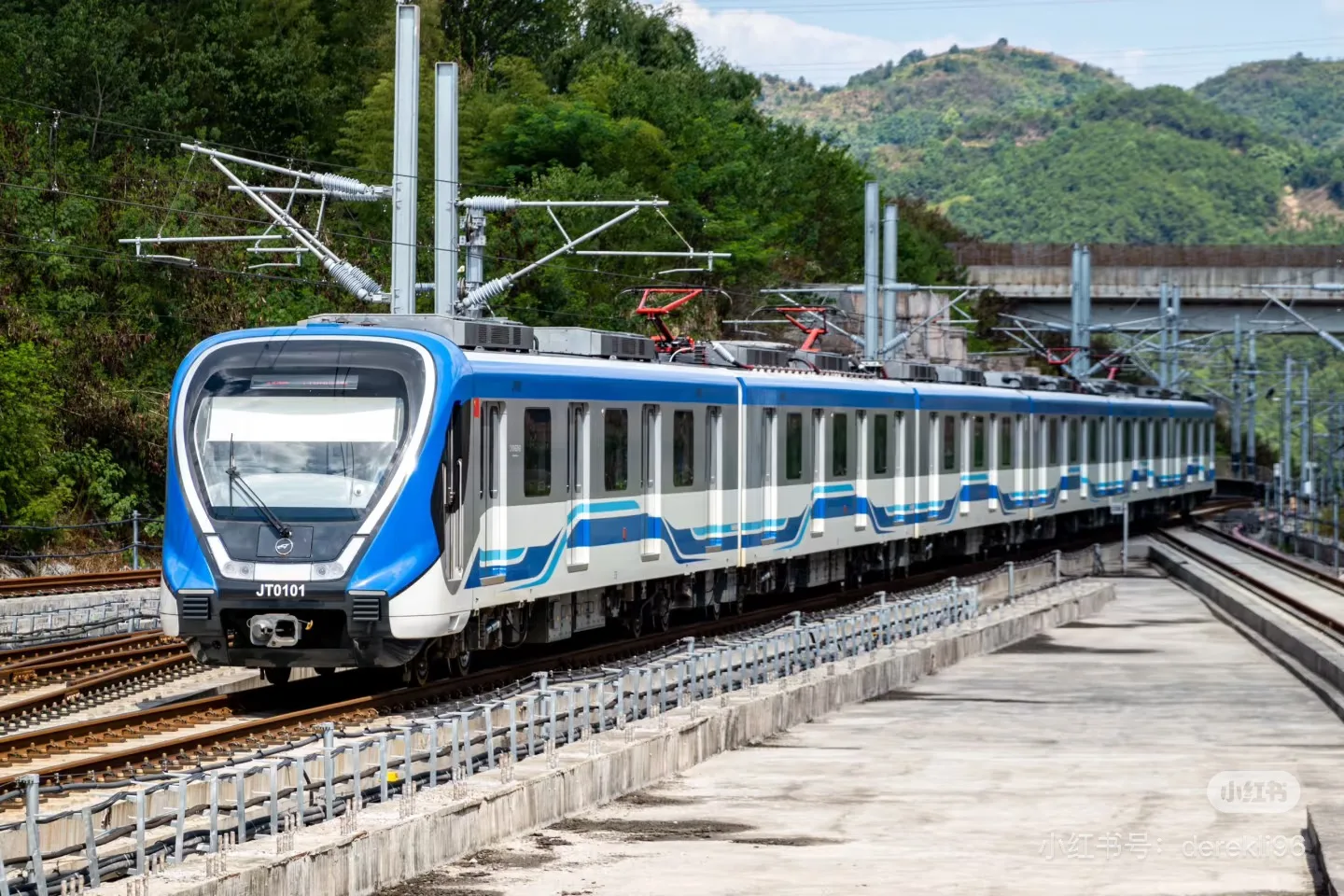
Once onboard the Chongqing Metro, secure a seat or hold onto a handrail for stability, especially during peak hours.
Popular stations like Xiaoshizi (near Hongya Cave), Guanyinqiao (shopping hub), or transfer hubs like Shapingba and Chongqing North can be crowded, with passengers often clustering near escalators and elevators.
For more space, walk to the train’s center cars, which are typically less packed.
Show courtesy by offering priority seats to the elderly, people with disabilities, pregnant women, or those with infants.
Keep noise low and avoid blocking doors to ensure a pleasant ride for all.
Ending Your Journey
Metro trains stop at every station along their route, with clear announcements in Chinese and English indicating the upcoming stop.
On some lines, such as Line 3 or Line 10, trains may operate in sections during peak hours to boost capacity, terminating early before the final station (e.g., at Guanyinqiao instead of Jiangbei Airport on Line 3). Listen carefully to onboard announcements, displayed on digital screens in English, to confirm your train’s destination.
If your train terminates early, simply exit with all passengers, wait on the same platform, and board the next train to continue your journey—typically within 5–10 minutes.
Before leaving, double-check for personal belongings to avoid losing items.
How to Pay Fares for Chongqing Metro
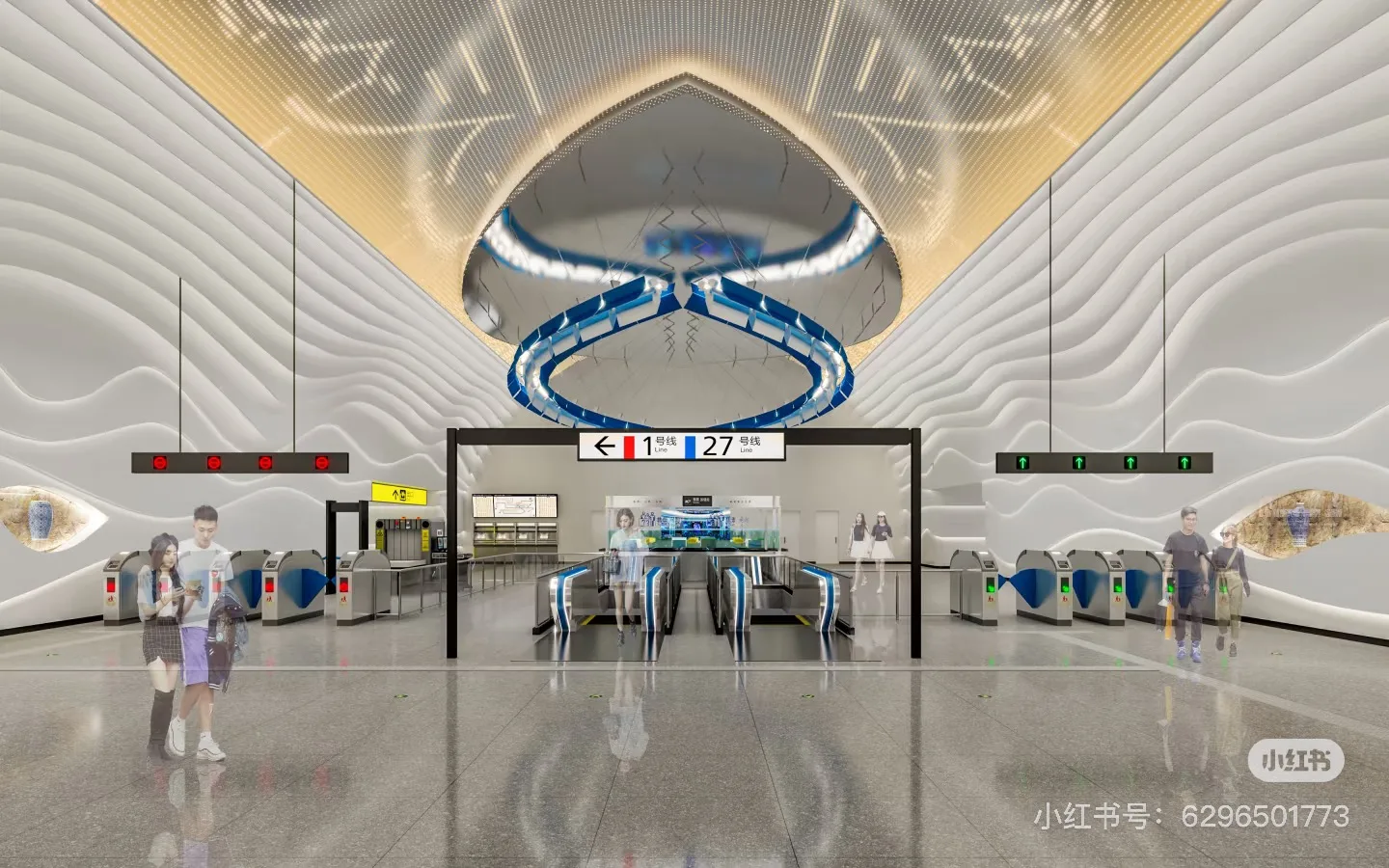
The fare you pay is based on your height and the distance you travel.
- There are five fare types: single-use tickets (bought at kiosks), souvenir tickets (collectible, available at select stations), fixed-trip tickets (multi-ride passes), period tickets (unlimited rides for a set time), and transit cards (physical or digital via Apple Wallet).
- Children under 1.3 meters ride free.
- You are expected to complete your journey, including transfers, within 3 hours of entry.
- Transit card users enjoy a free transfer within 60 minutes across metro lines, buses, or the Lianglukou and Kaixuan Road elevators, starting from your first tap at a station or bus.
Chongqing Metro Payment Options
- Kiosk Machines: Buy single-journey tickets at station kiosks with English interfaces, accepting cash or mobile payments.
- Mobile Apps: Use the Metro Metropolis app, WeChat, or Alipay’s transit mini-apps to scan QR codes at gates for seamless entry.
- Transit Card: Purchase a physical transit card (¥25 deposit, refundable) at stations or add a digital card to Apple Wallet for iPhone users. Cards offer free transfers within 60 minutes, saving costs for multi-stop trips.
- Staff Assistance: Visit ticket counters for help from transit staff, many of whom speak basic English.
Understand the Chongqing Metro System’s Visual Language
Platform Sign
When looking for a metro station, please refer to the following signs:
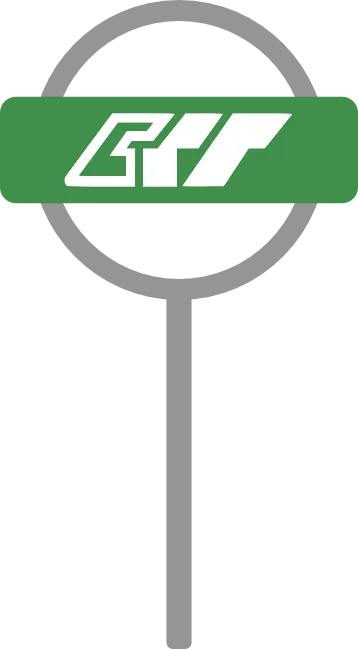
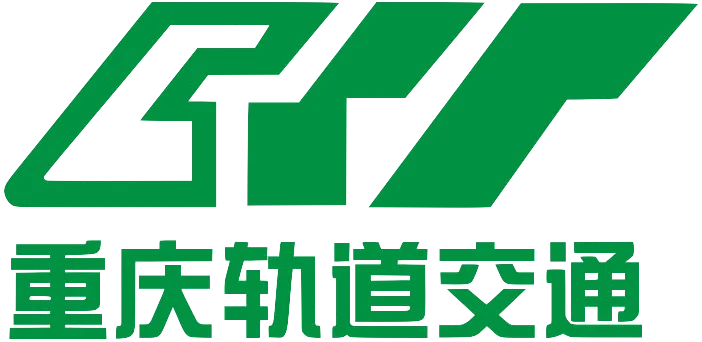
Entrance Sign
You will find the following information displayed at every entrance of Chongqing’s metro station.

From left to right, the sign displays:
- Line’s colour (e.g., purple for Line 10)
- Line number (e.g., Line 10)
- Station name in Chinese (e.g., 鹿山, Lushan)
- Station name in Pinyin (e.g., Lushan)
- Gate number (e.g., Gate5)
To navigate, identify your metro line and gate number, as gates lead to different exits, often connecting to malls, streets, or attractions.
Chongqing’s hilly terrain means some gates exit uphill (e.g., toward higher streets) or downhill (e.g., toward riversides).
Understand Chongqing Metro Platform

In Chongqing’s underground metro stations, the first level below the entrance houses ticketing kiosks, security screenings, and information displays. Here, you’ll find English signs detailing gate numbers and exits.
After purchasing tickets or passing security, descend one more level to reach the main platform where trains arrive.
Understand Gate Information at Chongqing Metro Station
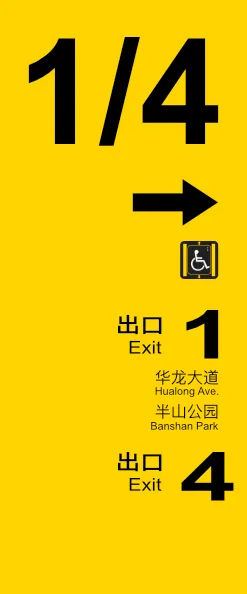
Gate information is shown on bright yellow exit signs. Each sign lists gate numbers (e.g., “1/4” indicates Gates 1 and 4 in the direction of the arrow) and nearby landmarks or attractions in English and Chinese. Signs also note accessibility features, such as elevators to street level, ideal for travellers with luggage or mobility needs. Use these signs to choose the best exit for your destination.
Transfer Sign at Chongqing Metro Station
Transfer stations are vital hubs in Chongqing’s metro system, where you can switch between two or more lines to reach destinations. Marked on transit maps, route displays, and announced in English and Chinese before arrival, these stations enable seamless line changes.

Upon arriving, follow clear signs directing you to your desired line’s platform, often via escalators or walkways.
What to Expect Riding on Chongqing Metro
General Tips While on Chongqing Metro
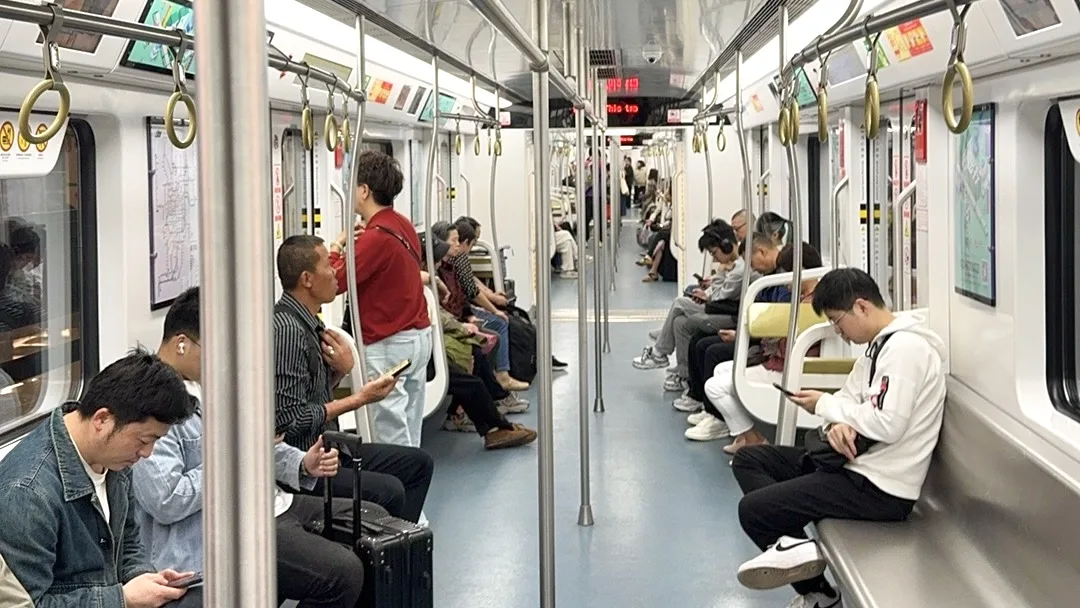
- Keep seats clear for passengers, not luggage, bags, or feet.
- Avoid wearing slippers or removing shoes, as this is considered rude in Chinese culture.
- Expect crowded cars at transfer hubs like Xiaoshizi (Lines 1, 6, 18) or during peak hours (7–9 AM, 5–7 PM), where personal space may be limited—plan non-peak travel if possible.
- Move toward the transit doors before you stop, especially at busy stations like Guanyinqiao (Line 3).
- Be mindful of personal hygiene, avoiding strong scents or pungent foods (e.g., spicy snacks) to respect others and keep trains clean; drinks are allowed.
- Wait for passengers to exit before boarding, and safeguard single-use tickets, as they’re collected at exit gates.
Priority Seating
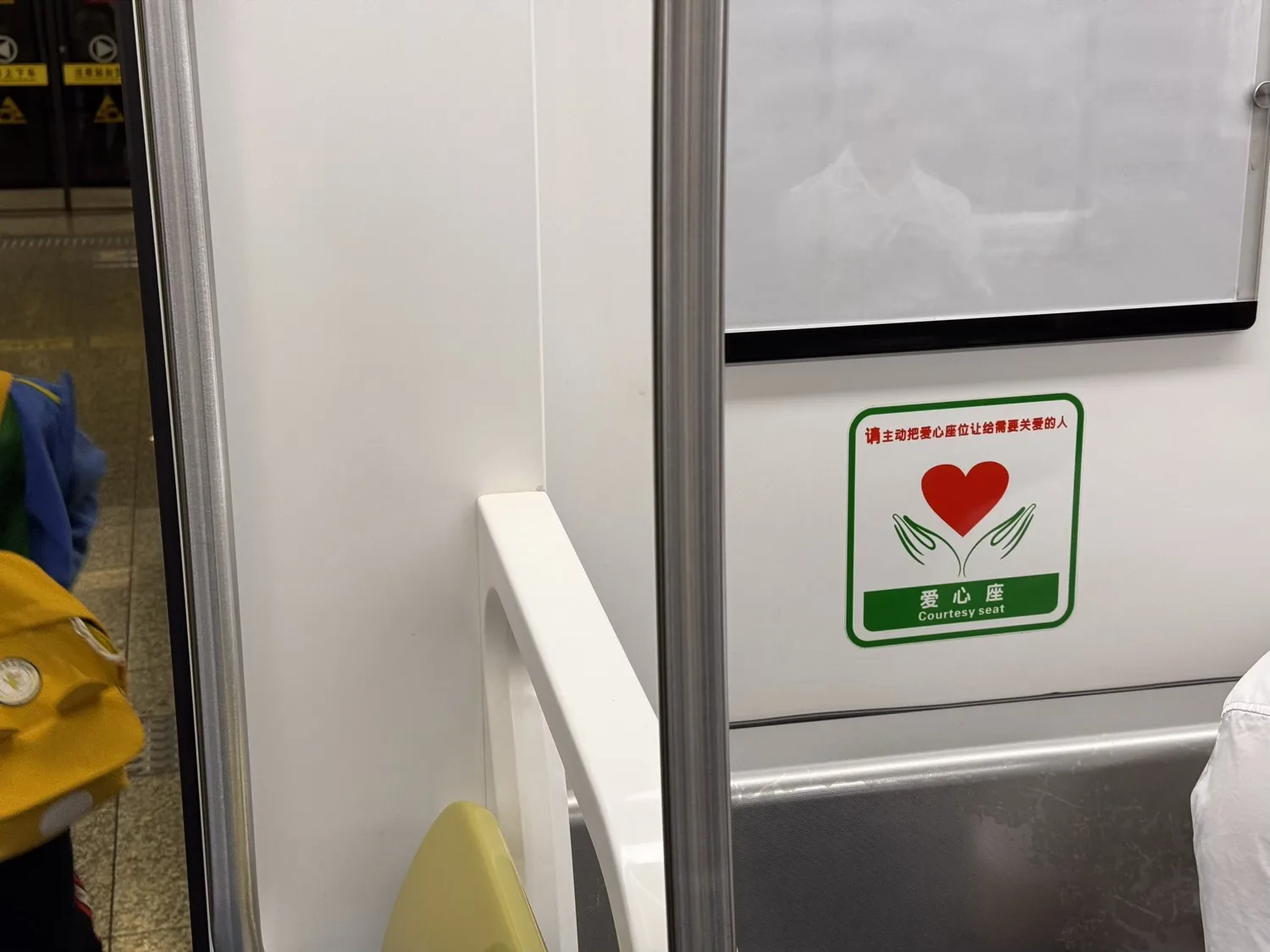
Seats closest to the doors are for passengers with mobility needs. This includes the following groups:
- peopel with disablity
- pregnant people
- older people
- people with injuries
Keep in mind that not all mobility needs are visible. If you’ve been asked to give up your seat, please take them at their word and give up your seat, though the likelyhood of that happening is very small.
You may also take the priority seat if there is no one in need at the moment. When you are in the priority seat, please be aware of those around you. Look up at the stops to see if someone needs a seat.
Smoking and Vaping
Smoking and vaping are strictly prohibited on the Chongqing Metro. Passengers are reminded to comply with all other transit-related rules and regulations.
Bringing Pets to the Chongqing Metro
Pets are not allowed to be brought on the Chongqing Metro other than service animals.
Please note that security officers may refuse to allow animals at their discretion. This may be because of a risk to other passengers or because of limited space. Travelling during off-peak time is recommended.
Chongqing Metro Accessibility Information
As a main transportation method, Chongqing Railway Transit is constantly improving its accessibility services. It currently offers the following services:
- Boarding ramp
- Tactile walkway
- Elevator
- Escaltor
It is recommended that people with mobility issues contact the Chongqing metro service hotline 023-88816666 1 to 3 days before their scheduled journey.
Chongqing Metro Lost and Found
If you lose an item, don’t worry—it may be recovered by transit staff. If found, check the CRT’s Lost and Found page, which lists all retrieved items.
Check the CRT lost and found items page
You can also phone CRT’s lost and found center:

Discover Chongqing with Haonan!
From mountains to grasslands, Chongqing has something to offer for everyone.
Start planning, find an inspiration, or search for a place.
Or follow us on social media.

